Home > Product Installs & Reviews > Product Reviews > Car Speaker Reviews > JL Audio M7 12IB Free Air Subwoofer : First Look
In this article: We'll give you a first look review of the JL Audio M7 series subwoofer, it's key features and our first thoughts about it!
In February this 2020, JL Audio announced the release of it's 12-in M7 series marine subwoofer. It's their new flagship subwoofer for marine applications, and for good reason. Everything about this subwoofer is bigger, louder and more powerful than its predecessor, the M6 10 inch subwoofer. When we heard about the release of this subwoofer we couldn't wait to get our hands on it. Up until now, the only way to get the quintessential JL sub sound in your boat was to throw a W6 or W7 in it (I know this because I did it!). And even though a W6 or W7 will slam in the marine application, is made with high-grade materials to last and will work great in most boats, it's technically not a marine woofer. The W6 and W7 were built for the automotive application and for those who might be in need of a sub that's designed for the Free-Air or Infinite Baffle application, there really just aren't all too many 12 inch options to choose from. If you're not sure what a Free-Air or Infinite Baffle is, check out our informative article here and our list of best Free-Air/Infinite Baffle subwoofers.
We happened to be preparing for custom stereo project on a 2013 Nautique G23 and felt it was the perfect opportunity to try one (technically two) of these monsters out. At the time of this article, there really wasn't much information about them out there. Keep in mind this is a First Look article, so we don't actually test the performance or sound of the M7 but we do have it in hand. Check back for when we actually install it in our G23, as we'll be covering the performance of this sub (among other things).
Unboxing & First Impressions
Unboxing a subwoofer is my second favorite part when you buy a new stereo product. Second to the first time listening to your favorite song after you tune your amps and subs. When my M7s arrived at the door, they were shipped in their own JL Audio boxes which enclosed the M7 packaging/boxes within. If you're getting these things shipped to your house, I would recommend that you're there to receive them because the shipping boxes have a few big “JL Audio” logos on them. It'd catch my eye if I were walking by a neighbor's front door. Just sayin.
When you pick them up to bring them inside you'll get what you're pretty much expecting in terms of weight. They're heavy. Weighing in at 23.35 lbs, they're about the same weight as JL's 12W6 (25.6 lbs).
My first impression of the subwoofer when I opened up the box was – is this a 12″? The grille is semi-permanently fixed to the subwoofer from the factory (screwed on via the back side of the subwoofer), which really adds some width to it. It's 14″ all in all with the grille. It really made me just feel like the subwoofer was ready to slam out of the box, but in reality it's still classified as a 12″ subwoofer in terms of it's size. Some vendors out there are calling it an ‘oversized sub' though. When you look at the numbers it kind of makes sense:
| Subwoofer | Overall Diameter | Bolt Hole Diameter | Cutout Diameter | Mounting Depth |
|---|---|---|---|---|
| JL Audio M7-12IB | 14" | 12.8" | 12.1" | 7.9" |
| Kicker KMF12 | 12.6" | N/A | 11" | 5.5" |
| Wet Sounds REVO 12 FA/HP | 12.7" | 12.2" | 11.1" | 5.3" |
| Rockford Fosgate M2D4-12IB/12S | 13.9" | 12.2" | 10.9" | 5.24" |
| Fusion Signature Series 3 | 14" | 12.81" | 12" | 8.06" |
| Polk Audio MM1242 | 12" | N/A | 11" | 5" |
| Clarion CM3013WL | 13" | N/A | 10.71" | 5.45" |
In almost every aspect, with the exception of the Fusion Signature 3 Series, the M7 is larger than these key competitors on the market.
The next thing I noticed was the intricacy of the grille itself. It looks like it's comprised of three separate components – the outer rim, the spokes and the inner grille – because they're separate colors, but they appear to all come out as one piece. Aggressive, clean and I love the two tone.
Looking at the sub in a little more detail it really looks sealed up. From the cone, terminals, LED wiring to the casing and spider – this is where you can really tell the difference between a JL's W6/W7 sub and their marine subwoofers. The entire motor structure of this sub along with any wire that leads to the motor or inner-part of the subwoofer is very well sealed. More about this in the marine-specific features section.
What's In The Box
JL keeps it simple with their subs, the M7 comes with:
- 12″ M7 Subwoofer
- 6 stainless steel mounting screws
- JL Audio stickers
- Manual
Recent Reviews & Articles
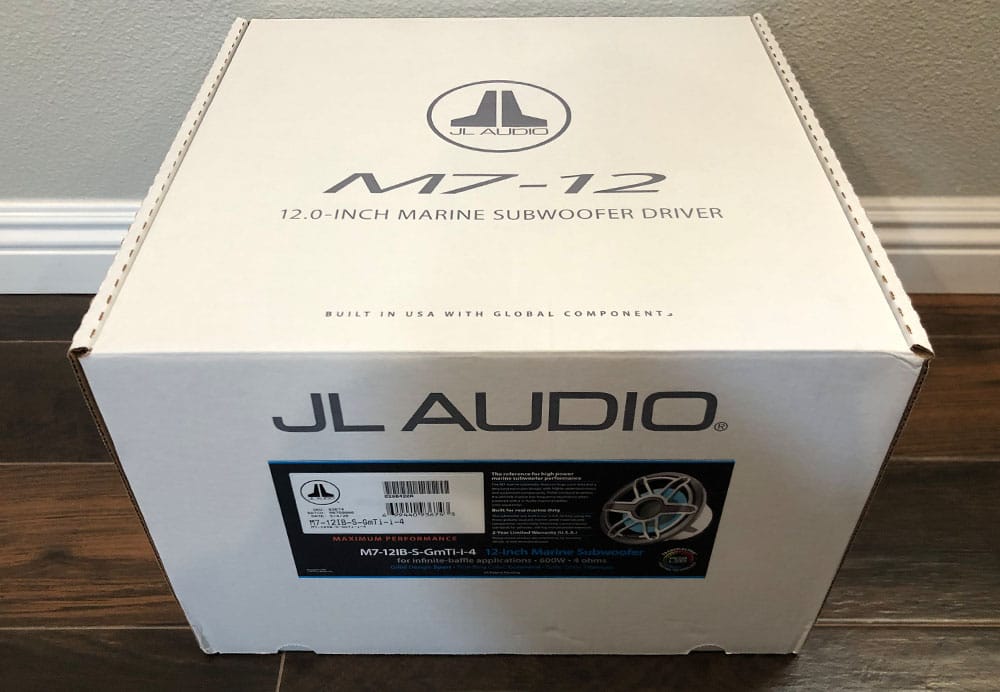
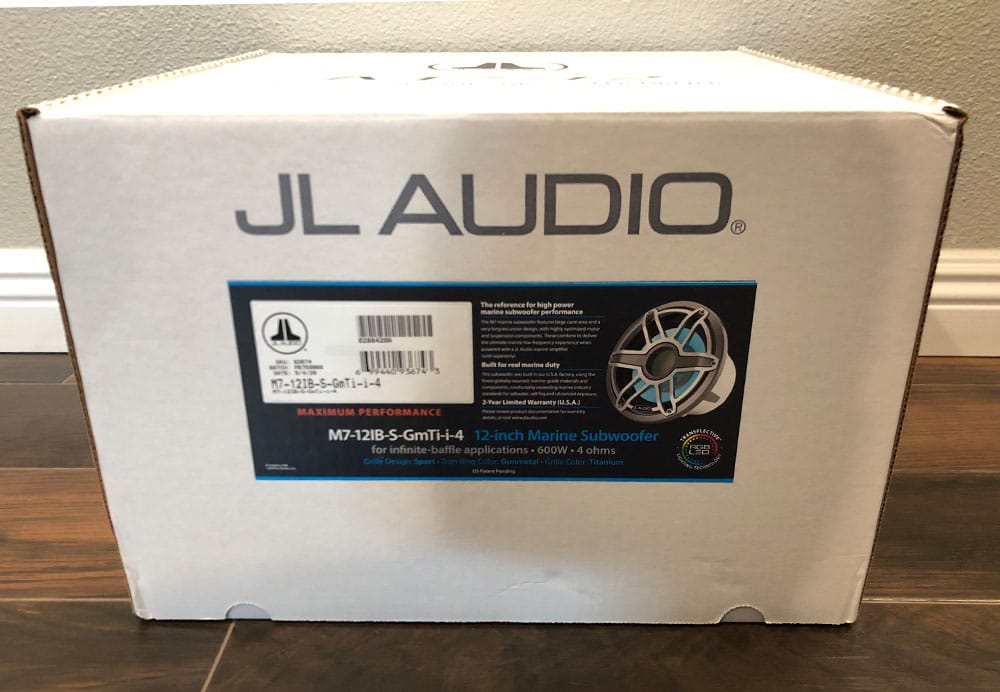
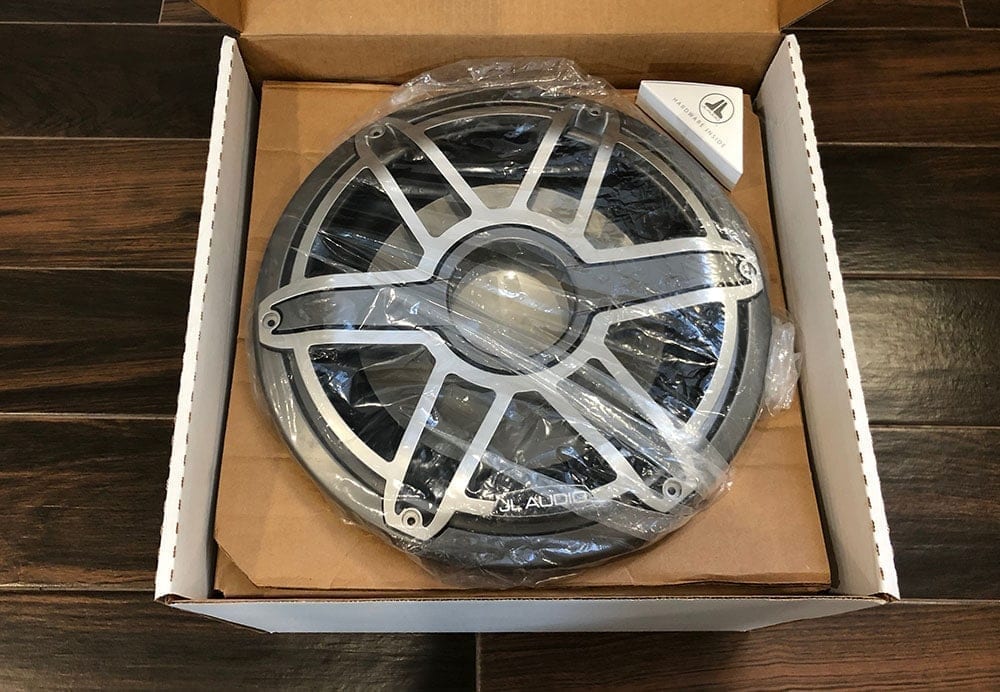
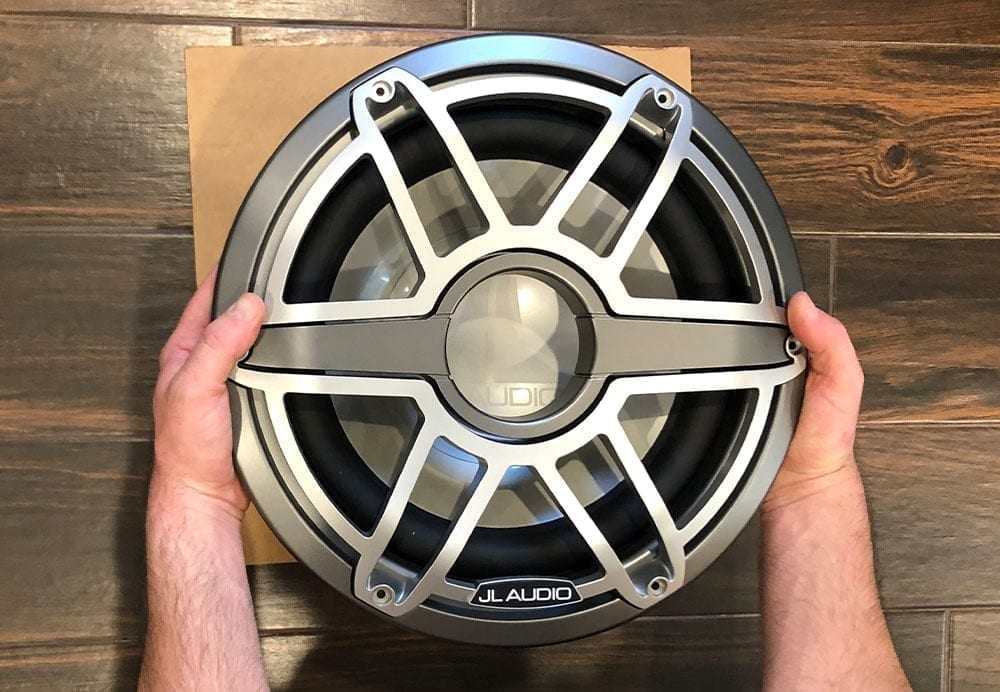
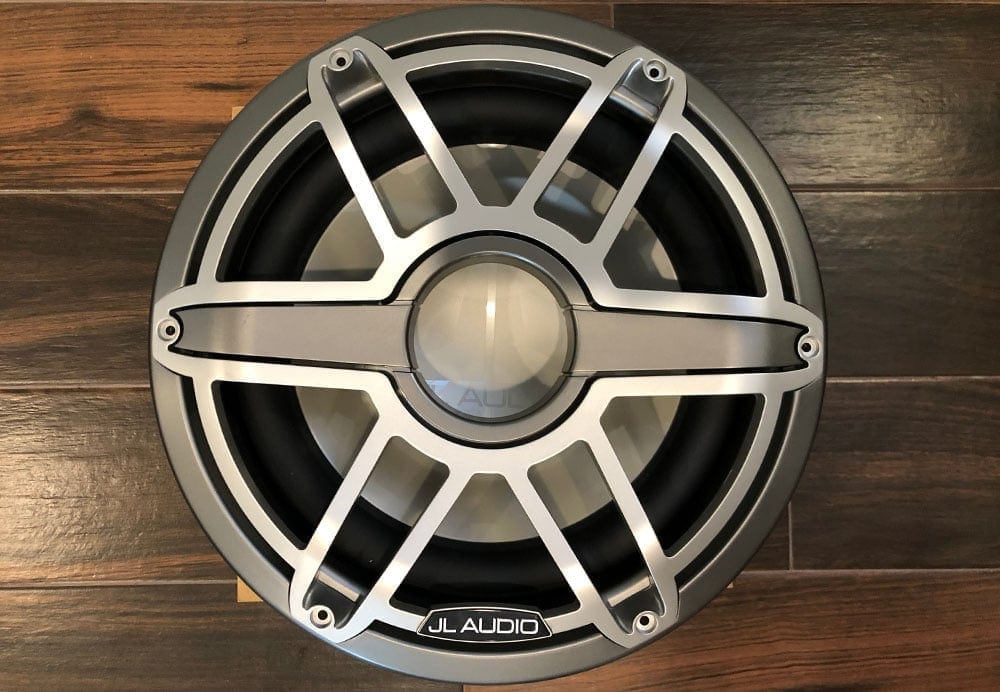
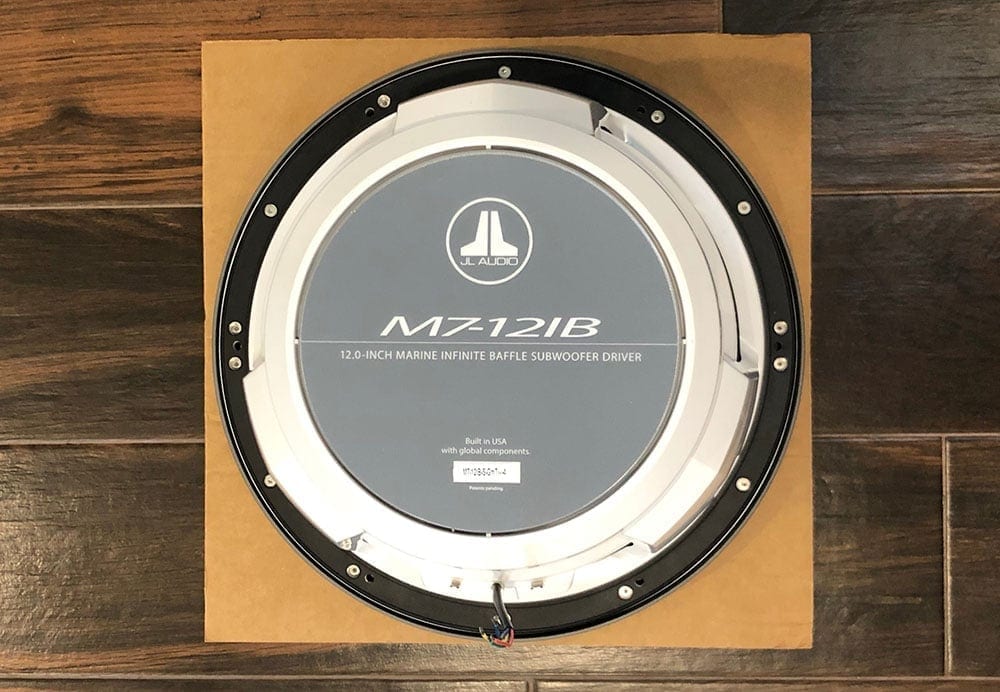
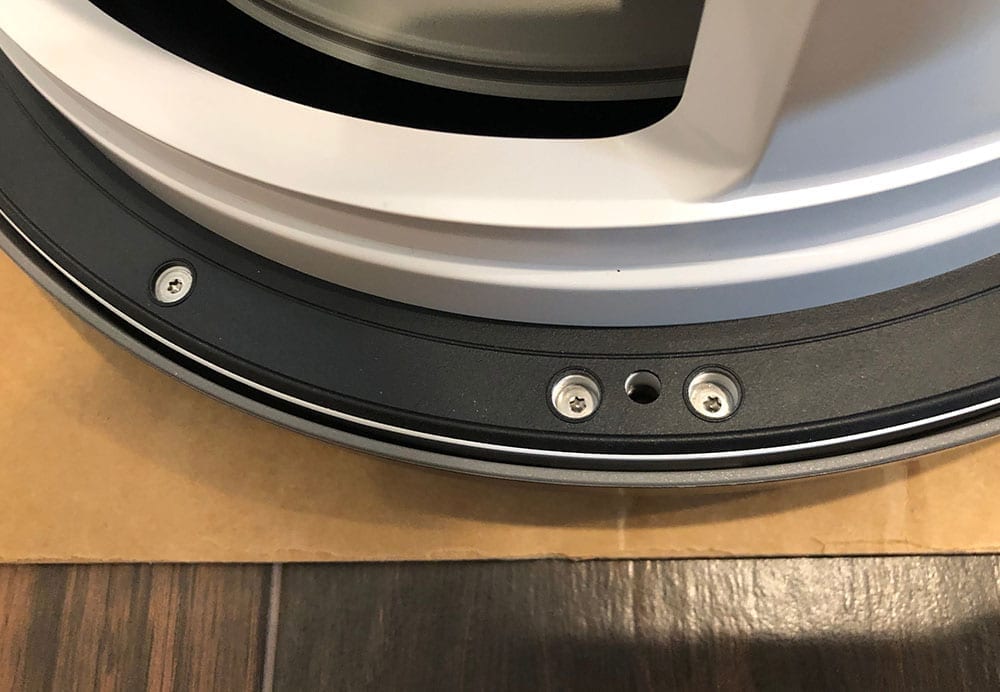
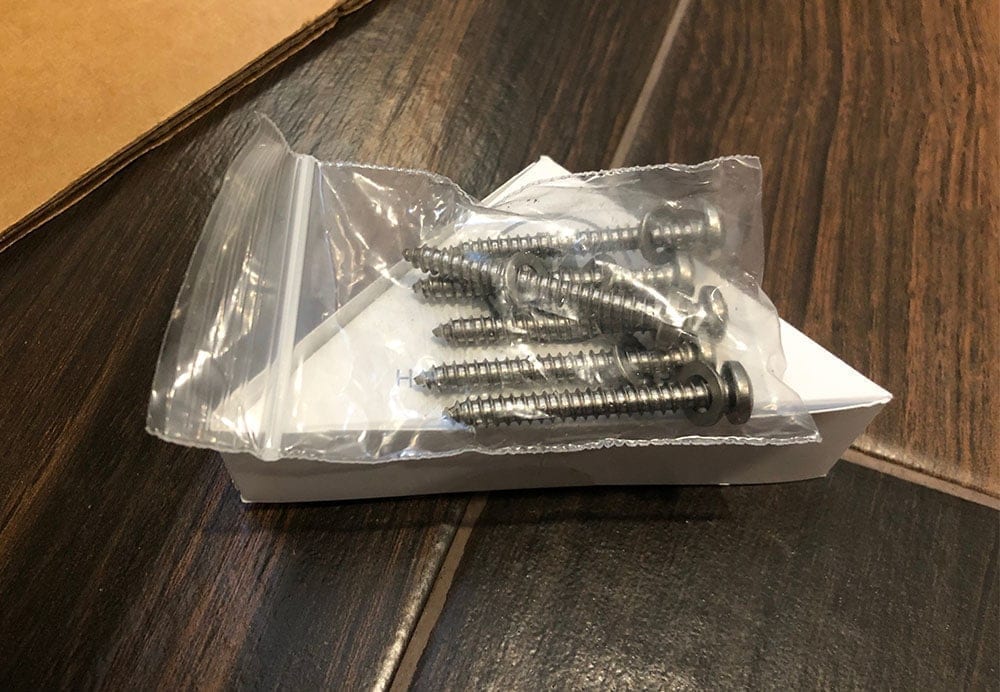
Sound Features: Displacement, Power Handling, Excursion
This sub really puts JL's marine subwoofers on the map for me. It's the first time I've considered their marine line instead of their standard W6 or W7 automotive line of subwoofers. Their M6 subs were great in their own right but it's 12 inches or none for me, particularly on the water. You can dial the gains back a bit if you have a little too much volume but when you're 20 ft away from the boat on the sandbar you'll be wishing you had the additional volume from two 12s instead of two 10s. The M7 is bigger and better than the M6 in about every aspect. Let's look at the cone first.
The Cone
The cone on the M7 is unique in a sense that it's incredibly durable (made from mica-filled polypropylene) but transparent at the same time. It's also much larger than not only the M6 10 inch, it's larger than some of the best competitive marine subwoofers on the market. Although I couldn't find measurements of the cone itself among the competing subwoofers, in the sizing table I placed earlier in this article there's one particular metric that I think you can probably use as an indicator to the cone size – cutout diameter. Here's why I think this – the cutout diameter follows the diameter of the casing. The casing follows the diameter of the cone so that there's no collisions. Here's an overview of all of the size measurements and their terms to give you a better understanding.
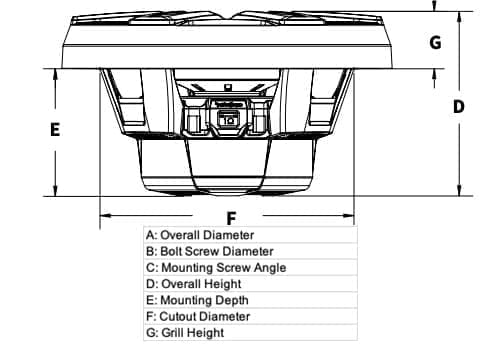
When you compare the cutout diameter of the M7 12IB against some of the competitors that I listed earlier, it's a full inch wider.
When you compare it back to the M6, the M7 has 61% more cone area than the M6 sub and 2.25x the total air displacement according to JL. Not bad for an extra 2 inches. They claim it has over 6dB of additional output capability over its M6 cousin too.
You may have noticed I mentioned it's transparent too. This is purely for aesthetics – when you turn the LED lights on, they shine straight through from underneath the cone to give a unique glow. Check out the LED section below for more details about the LED functionality.
Power Handling
In terms of power handling, it's pretty competitive as well with a 600 watt RMS power at 4 ohms. You compare this to the Wetsounds REVO 12 FA S2/S4 with 400 watts RMS at 4 ohms, Rockford's M2D4-12I/IB's 400 watts at 4 ohms and Kicker's KMF124's 350 watt RMS at 4 ohms – just like it's size, it has them all beat.
Excursion
In terms of excursion, the M7 has a whopping 18.5mm. I started browsing through Crutchfield's Marine Subwoofer section for some comparisons and when you compared to the Wet Sounds REVO 12 FA's Xmax of 11.5mm, the M7 has around 60% more excursion. Similarly, when compared to the Rockford Fosgate M2D2/4-12I/IB which as around 15mm Xmax, the M7 is has around 20% more.
So when you combine the larger surface area and displacement of the cone, the higher power handling and lengthy excursion, you really have a subwoofer built to push air. I'm really excited to see how it sounds in it's element.
Specs:
- 2″ 4-ohm marine subwoofer
- Injection-molded mica-filled polypropylene woofer with synthetic rubber surround
- Centrex polymer basket and grille, with stainless steel back plate
- Gold-plated, marine-grade brass binding posts
- Marine-grade synthetic fiber spider
- Designed for infinite baffle installations
- 600 watts continuous power handling (RMS)
- Sensitivity: 86.7 dB
- Mounting depth: 7.94 in / 202 mm
- Warranty: 2 years

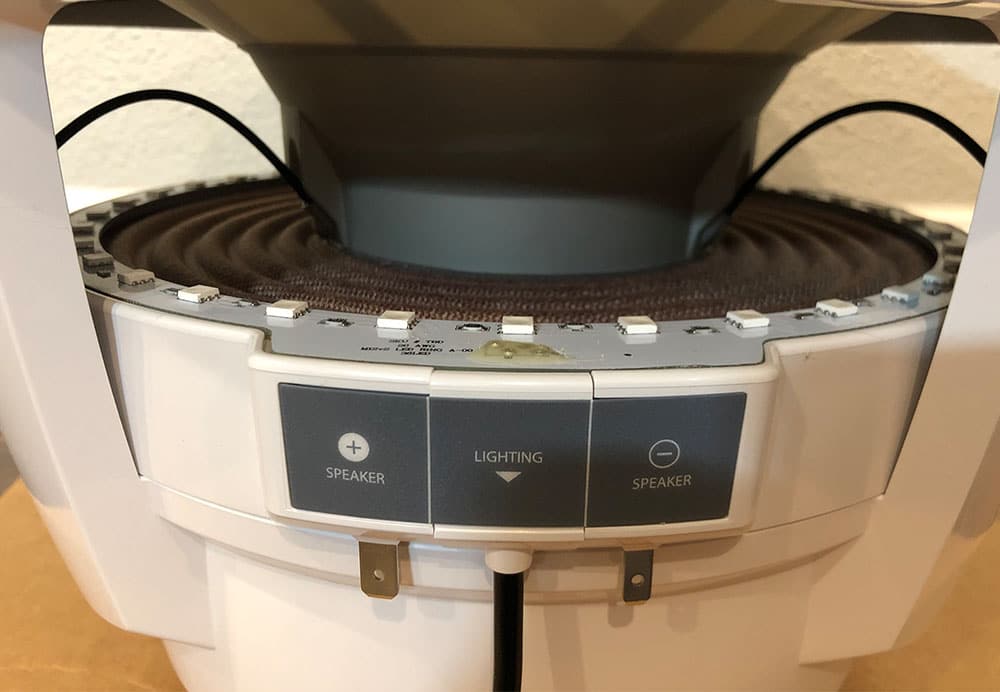
Marine-Specific Features
Just like all of the rest of JL Audio's marine-grade equipment, the M7 12IB is fit to withstand the worst of marine environments. This includes salt water applications. I mentioned this earlier but one of the key components that are susceptible to the environment is the the motor and internal structure of the woofer. JL uses a corrosion-resistant polymer basket to surround the internal structure of the subwoofer to limit its exposure to moisture, salt and UV light. This is pretty standard in all marine-grade subwoofers.
In most competitive subwoofers, they Santoprene rubber is the gold standard for the cone surround material for not only marine but also automotive applications as well. One of the interesting small(ish) details that sets JL apart is they use “synthetic rubber surrounds, specifically formulated with UV inhibitors for marine duty”. Knowing how JL does their due diligence in R&D, it's probably safe to assume that Santoprene was tested against this ‘formulated' synthetic rubber and the formulated performed better.
Some other key marine features to note include gold plated, marine-grade brass binding posts to limit corrosion buildup that could lead to shorts or speakers that cut out in choppy water. The spider is also made from synthetic fiber as well with a design that's made to withstand high humidity and to keep the internals dry.
All of these details can be found on paper or across the web, but the real test is going to be time on the water. The subs that I purchased will be going on a boat that's on fresh water and dry stored in an enclosed storage unit so it's likely that the marine and anticorrosive features aren't going to be put to the test as much as a sport fisher would be out in Dana Point. I will say that when you inspect this sub close up it's hard to find a vulnerable component. There are no holes – all of the wiring is tucked and sealed even if it penetrates the casing, there's no exposed metal apart from the terminals. You can just tell it's built for the elements.
The one thing I think they would have included is maybe a terminal cover like Kicker's KMF series to be ultra safe with the terminals. The KMF's aren't gold/brass plated though so maybe it's a little overkill.
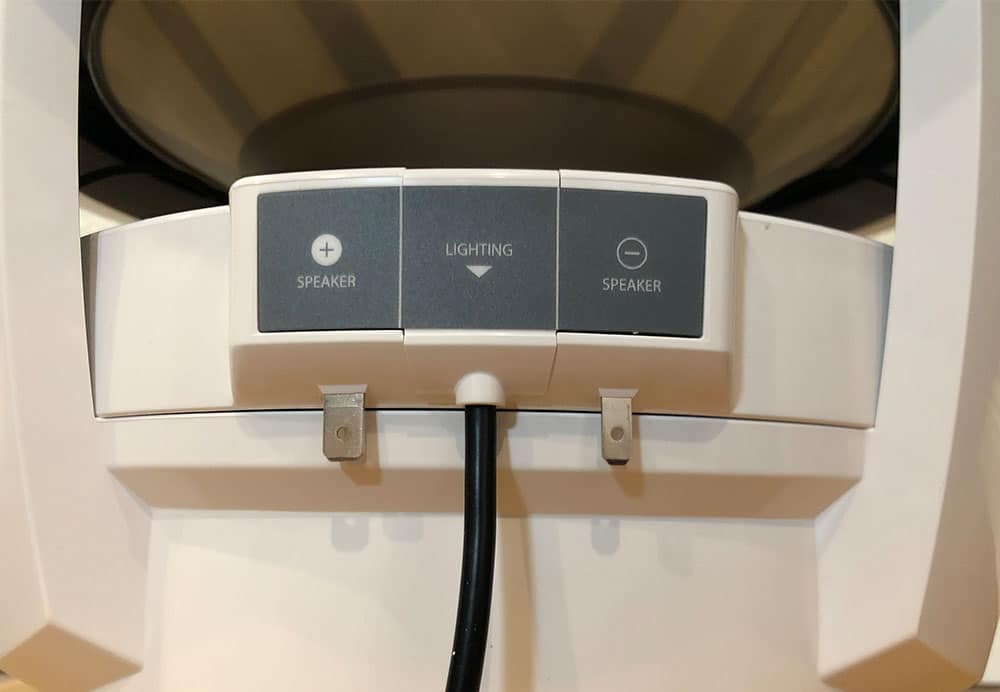

LED Lighting
JL was clever with their lighting in the M7 (and M6 line of products). Instead of placing the LED ring on the outer edge of the speaker, or on the back side of the grill like Kicker and Wet Sounds, JL placed the LED underneath the cone to shine through the transparent polypropylene cone. They do the same thing on the M6 subwoofers and speakers as well. This lighting design gives the speaker a really natural looking light without the ‘shine'. They call it ‘Transflective RGB LED Lighting' and it's a patent pending system that's proprietary to JL Audio.
The M7 is capable of emitting 7 different colors: Red, Green, Blue, Yellow, Pink, Aqua and White. There's two ways to wire the LED lighting on these subwoofers: Direct and using the MLC-RW RGB LED Controller.
Direct: If you want a single, constant color this is a straight forward and easy way to wire it. Simply power the yellow wire with 12v + and combine the appropriate wires to the negative terminal to create the color that you'd like. See the chart below for details, or navigate to their manual at https://embed.widencdn.net/pdf/plus/jlaudio/npw5uotsyc/M7_12IB_MAN.pdf?u=rfhkrg.
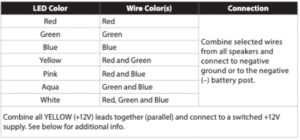
Via MLC-RW RGB Controller: If you want full control over your LED lighting at any point in time, the MLC-RW is going to be the component that make it happen. It uses a single WiFi controller that you'll tie your subwoofer, which then will connect to a phone app (LiteWave) where you can control the color, intensity and modes. Simply wire color-to-color from the controller to the subwoofer (e.g. green to green). You can find the full instructions here: https://pdf.crutchfieldonline.com/ImageBank/v20190420132600/Manuals/136/13699816.PDF
Here are some photos I took while testing out the LED via the “Direct” wiring method.
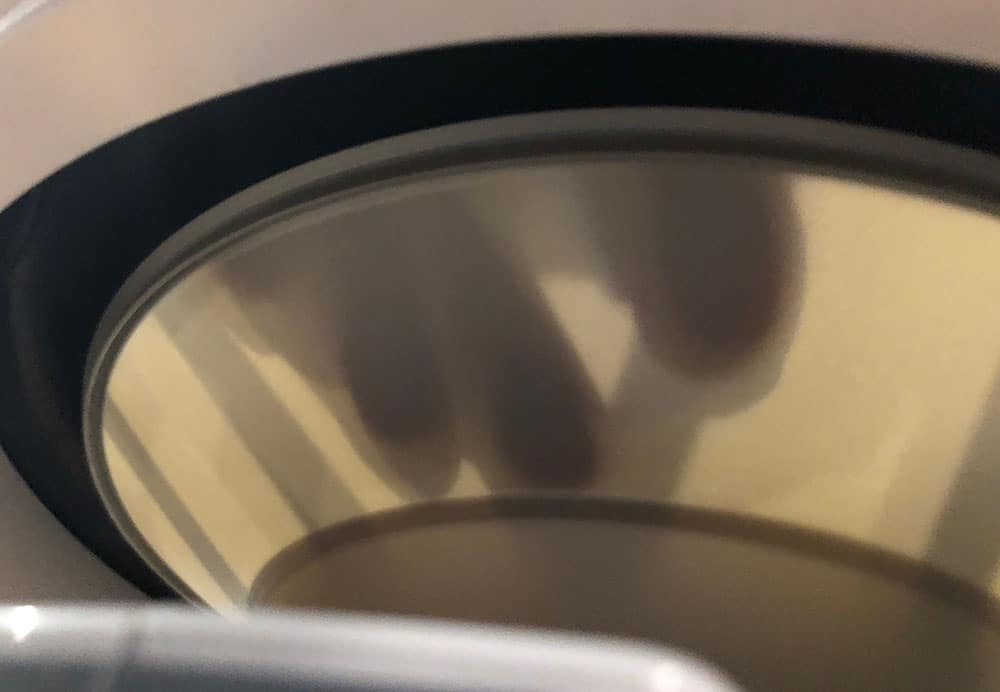
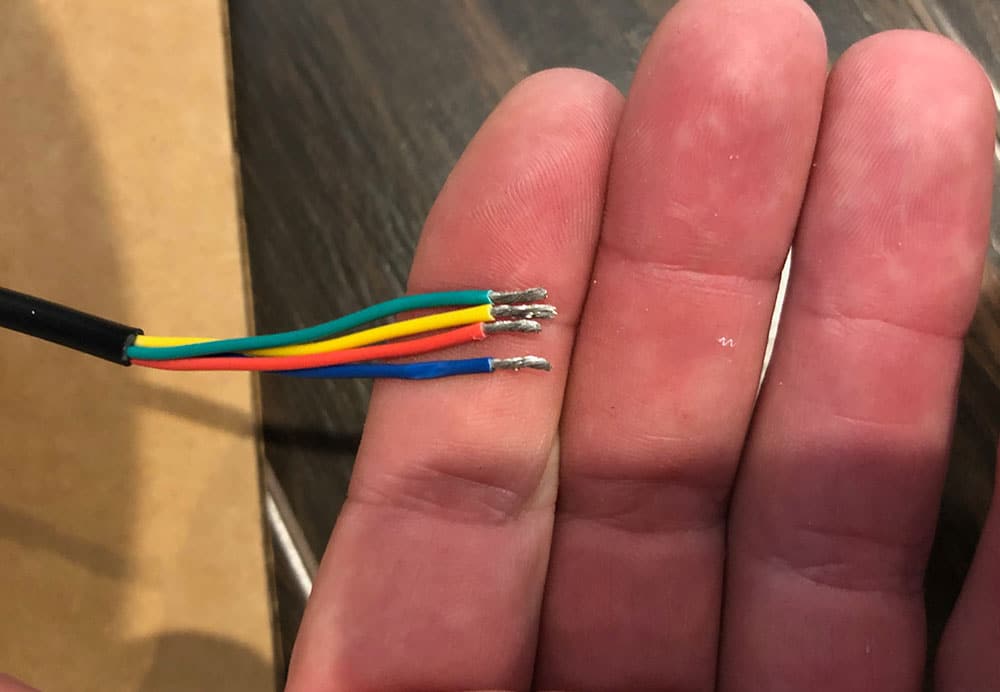
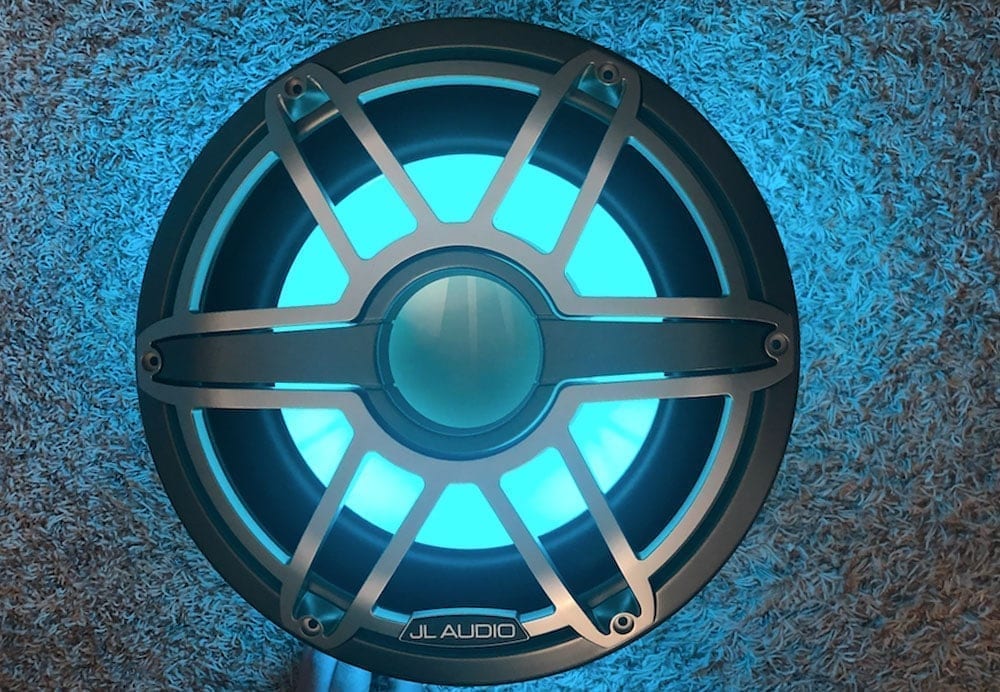
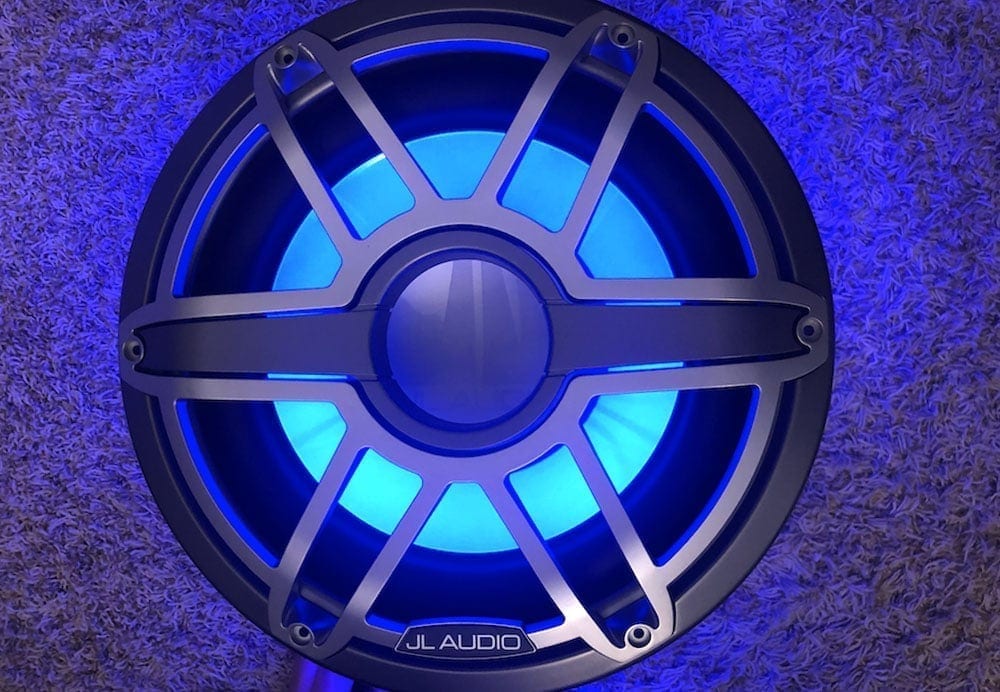
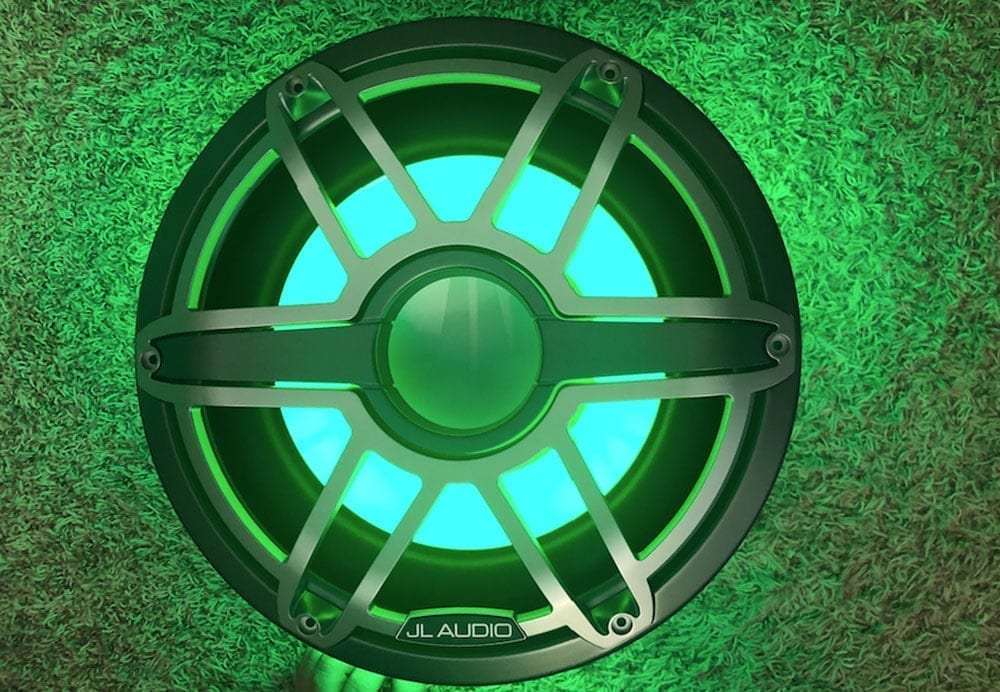
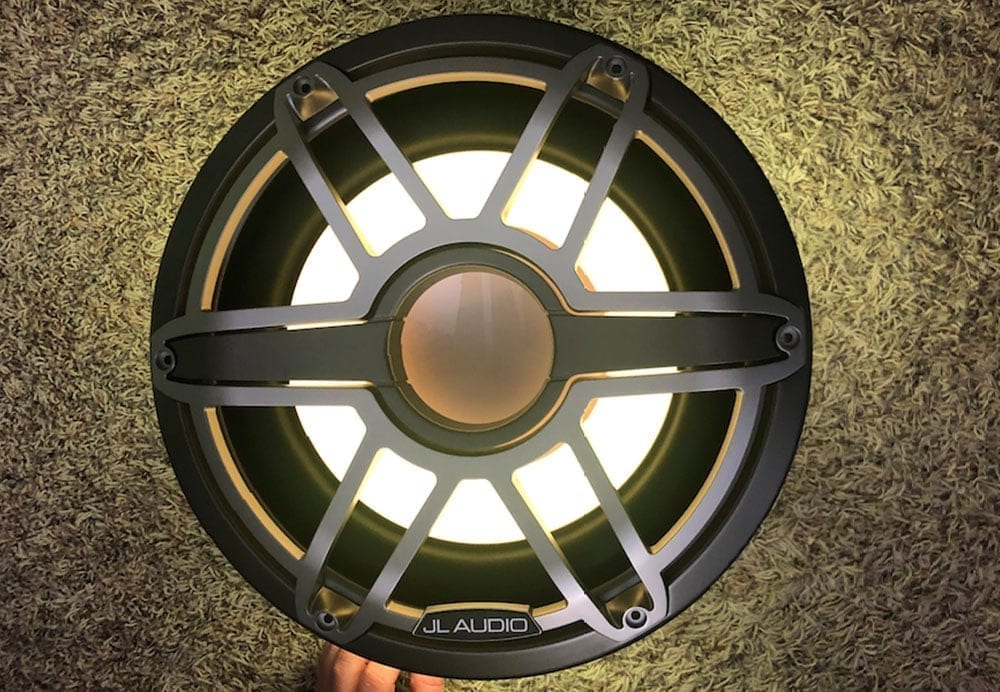
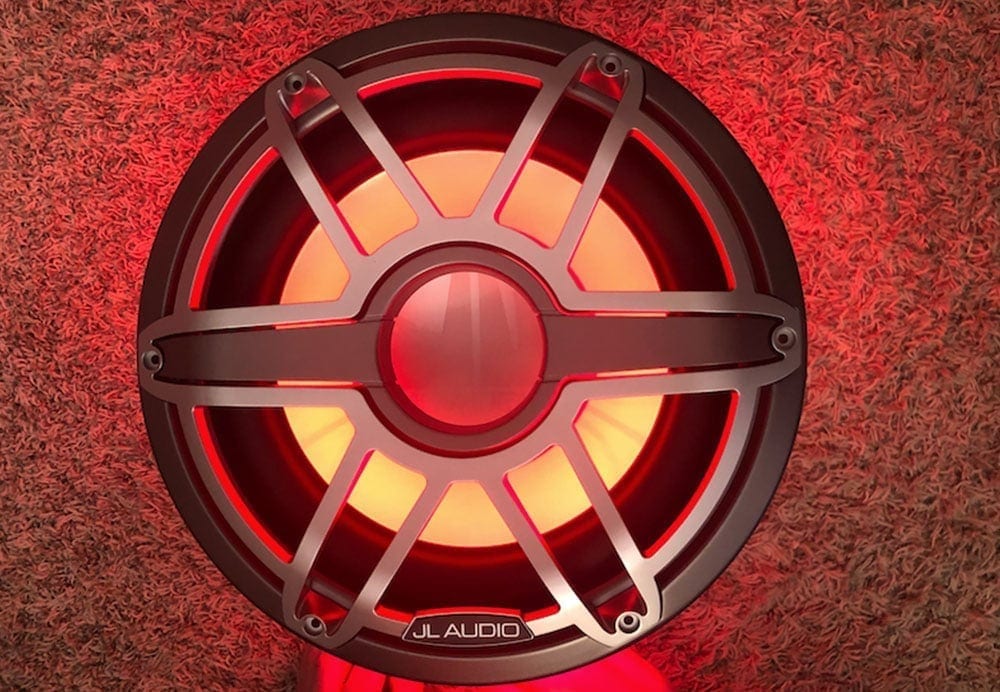
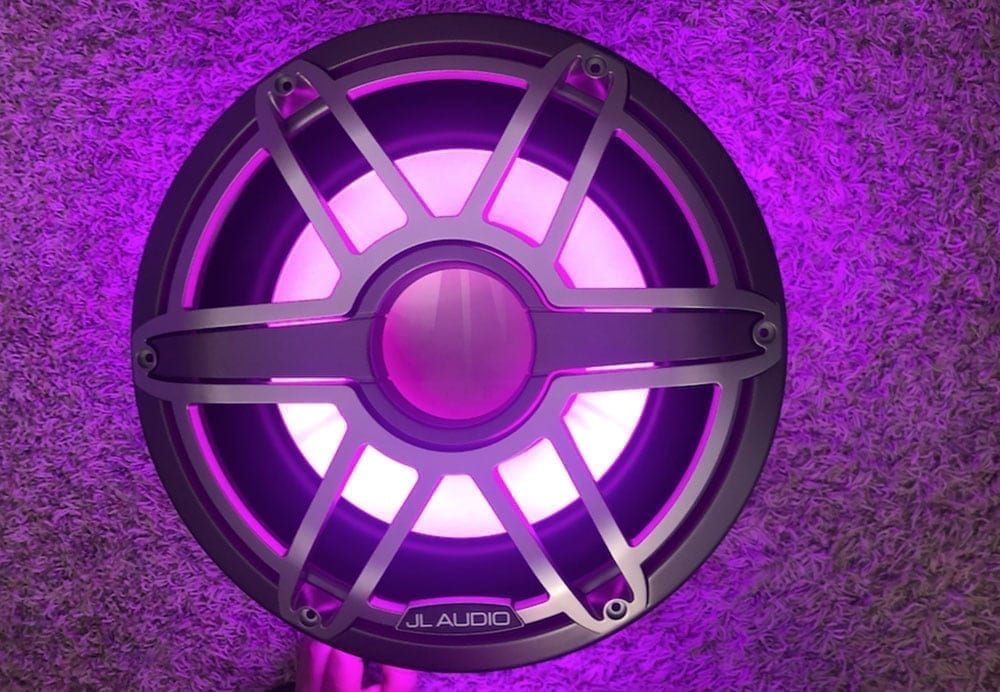
Summary & Final Thoughts
Out of the box, you can tell these M7s are monsters and are not only built to slam but they're built to do it for years on the lake, lagoon or ocean. They're the perfect choice for the OEM G23 enclosure(s) that are a free-air-like application, but they can also be placed into an enclosure (be sure to follow the specs). I won't be testing an enclosed application though. I really like the LED design on these speakers too but I wish they could have a little more intensity.
